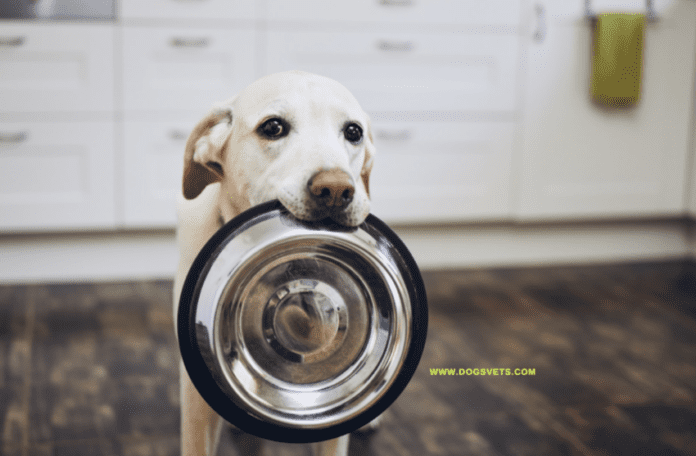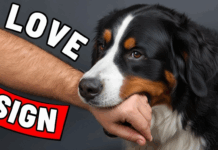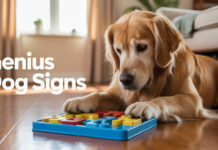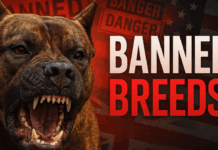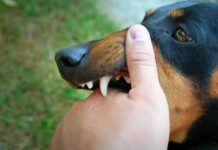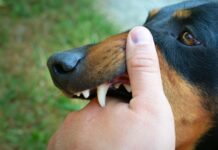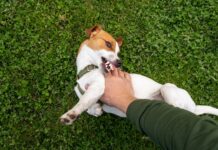Last Updated on October 16, 2022 by Dogs Vets
How to Stop Your Dog from begging for Food
Not only are humans the masters of the house, but so too is your dog!
Unless you’ve gone overboard in spoiling your pup, he or she will eventually start to beg for food from you – even if it’s not truly necessary. This can lead to some troublesome behaviour, like destructive chewing or excessive barking.
To stop your dog from begging for food at dinner time, follow these simple steps:
How to stop your dog from begging for food?
Dogs are man’s best friend, and for a good reason – they’re loyal, loving and always up for a good time.
However, there are times when your pooch can be a little too vocal, begging for food off of your plate or counter. Here are four tips that will help you stop your dog from begging consistently:
1. Be firm but kind with your dog. Once they understand that good manners include not eating off of people’s plates or counters, begging will become less frequent and eventually disappear!
2. One way to stop your dog from begging for food is to start training them at an early age.
3. Make sure you provide the right type of rewards when your puppy or dog performs a behavior you want them to maintain, such as sit, stay, etc.
4. If they still beg consistently after trying these tips, consider buying them their own food bowl instead of letting them eat off of yours.
What is the problem?
Dogs are man’s best friend, and they love food. Unfortunately, some people unknowingly teach their dogs to beg for food when they’re not hungry. This can be a problem, as it becomes a habit that’s hard to break.
If the problem persists, consider obedience training or hiring a professional pet trainer to help resolve the situation.
In the meantime, make sure you feed your dog regularly and give him a small treat instead of feeding him whole meals if he starts begging. This behavior can be reinforced with training your dog to sit and stay instead of begging.
Ultimately, training your dog will help him learn to control his hunger and stop begging for food.
Don’t let your dog fool you
Dogs are man’s best friend, and there’s no denying that they love food. But that doesn’t mean they have to beg for it every time they have a craving. In fact, you can stop your dog from begging for food by starting with housetrainment.
Once your dog understands not to beg from the outside, you can start teaching them how to sit and stay instead of coming to you every time they have a craving.
If that still doesn’t work, try feeding them in different places so that they don’t know where their next meal is coming from. If all fails, try training your dog with positive reinforcement. This will help them learn that begging isn’t the way to get what they want.
The solution
It can be tough to stop your dog from begging for food, but it’s possible with some patience and training. The first step is to train them early on. This will help shape their behavior and establish good eating habits from the get-go.
If training doesn’t work, make sure to provide a nutritious diet that addresses their specific dietary needs. Additionally, create a positive reinforcement environment where your dog knows they will always get a treat for good behavior.
Finally, take your dog for a walk after dinner to help them wind down and have less of an appetite for food.
Use a food dispenser
Keeping your food dispenser clean and refillable is important to ensure that your dog gets only the right amount of food at the right time.
You can also feed your dog their favourite treat from the dispenser in place of giving them food from outside sources. It’s also important to set a feeding time limit so that your dog doesn’t get too much or too little food, respectively.
And lastly, rewarding good behaviour with treats instead of feeding them directly from the dispenser will help keep dogs focused and motivated towards good behaviour.
Train your dog to sit
Raising a dog is a rewarding experience, but it can also be challenging when it comes to training them.
If you stop rewarding your dog for sitting down, they will start begging again! That’s why consistency and repetition are key – if you make the same rewards/punishments available at all times, your pet will know what to expect.
Once your dog knows how to sit properly (after being taught), continue rewarding them with treats whenever he or she does so correctly.
You can gradually increase the difficulty of the task by making it harder for them to get their reward if they don’t sit down quickly enough.
Ignore your dog when it begs
Dogs are social animals and need companionship. If you can’t ignore them when they beg, give them a treat instead! Ignore them and they will eventually stop begging.
Praise your dog when it does not beg
Praising your dog when it does not beg is a great way to train it on how to behave.
All you need is some consistency and practice, and your dog will soon get the message!
You can also add extra treats to its meal as a form of reinforcement – rewarding good behavior. In addition, praising your dog for not begging for food will help stop future begging incidents.
Feed them at the right time
There are many benefits of feeding dogs small meals throughout the day instead of one big meal. This will help them feel more satisfied and avoid making begging a habit.
Providing them with a balanced diet that includes necessary nutrients is also important.
Avoid giving your dog too much food at once – this might make him over-eat and become overweight, which is not good for his health in the long run!
How can you avoid your dog’s negative behaviour at dinner time?
Dinner time can be a challenging time for both you and your dog.
If you’re finding that training and boundaries aren’t working, try setting a food-free zone in your home. This can be a small room, or a specific time of day.
If that doesn’t work, try teaching your dog “no” words. Finally, never reward bad behaviour – it only reinforces the behaviour!
If you’re looking to stop your dog from begging for food altogether, try housetraining them early on. This will help them learn that food is not always available, and will reduce the amount of begging at dinner time.
Train your dog not to beg
It can be frustrating when your dog begs for food constantly. If you’re struggling to put a stop to it, here are some tips that may help.
First, gradually increase the time between rewards until your dog learns to wait their turn. If that doesn’t work, then you may have to resort to disciplining them.
Start by rewarding your dog when they stop begging, and gradually move on to punishing them when they do.
Remember that training takes time and patience, so don’t get discouraged if it doesn’t work right away!
Frequently Asked Questions
Is there anything else I need to do to help me train my dog not to beg for food?
There are a few things you can do to help train your dog not to beg for food.
1. Crate training is a great way to redirect the canine’s attention and teach them that it’s not okay to beg incessantly for food from their owners.
2. Distracting your dog with another activity like playing fetch can also help to distract them from their hunger pangs and stop them from begging excessively.
3. Try rewarding your dog when they stop begging with treats instead of giving them food straightaway. This will help to reinforce the behavior you’re trying to get rid of.
How can I stop my dog from begging for food?
There are a few things that you can do to stop your dog from begging for food.
The most important thing is to feed them once a day instead of multiple times throughout the day. This will help to teach your dog that mealtime is an important event and not something that they should beg for.
Another way to stop your dog from begging for food is to train them early on.
When they are puppies, make sure to provide positive reinforcement such as treats or petting when they comply with your commands not to beg for food.
If your dog frequently begs for food or steals food from neighbors, punish them accordingly by withholding meals.
What should I do if my dog is always eating outside the house?
If your dog is always eating food that’s been outside the house, you can use various treats and toys as rewards to help teach your dog how to sit, stay, and not beg for food inside the house. Plus, make sure to stop your dog from begging for food by training it properly.
The best way to train your dog is through positive reinforcement – rewards make dogs focus on what you want them to do.
How can I make sure that my dog gets enough exercise while he’s indoors?
There are a few ways that you can make sure your dog gets enough exercise while they’re indoors.
You can try out Clicker Training with your dog – it’s a systematic and positive reinforcement method that helps you teach your furry friend new tricks.
You can also feed him smaller meals more often, provide structured playtime outdoors, and put his food bowl in a hidden spot. Additionally, one way to stop your dog from begging for food is to do some obedience training.
What are some other ways to discourage my dog from begging for food?
There are a few other ways to discourage dogs from begging for food.
For example, you can use treats instead of giving them food when they beg. This will encourage them to wait until their next meal.
In addition, some other ways to discourage dogs from begging include using a kennel, disciplining the dog in an appropriate way (positive reinforcement), and making sure there is enough human interaction for the dog. Finally, make sure you train your dog from a young age to stop begging for food.
Why does my dog sit at the dinner table?
There are a few reasons why your dog might sit at the dinner table. One of them is that you can stop your dog from begging by rewarding them with treats instead of giving them food.
Dogs were originally bred to herd and protect livestock, so when they see food in front of you, they may think that it’s theirs. To stop this behavior, you can train them using positive reinforcement methods such as clicker training.
Why does my dog sit under me when I’m eating?
When your dog sees you eating, they start to beg for food themselves. This is because dogs understand human language and are attracted to the sound of voices.
You can stop your dog from begging by sitting down opposite them or putting a chunk of meat in their bowl instead of giving them a whole one.
Why does my dog sit at the dinner table?
One reason why your dog may sit at the dinner table is because they are begging for food.
To stop this behavior, you will need to train your dog with positive reinforcement.
This means rewarding them every time they sit in their designated spot instead of going to the kitchen or begging for something from you.
When your dog sits at the dinner table, it is also a sign of submission. Dogs have been bred to be loyal to their masters and sit at the dinner table as a sign of submission.
Is it okay to feed my dog table scraps?
As long as you are feeding your dog food that is healthy and appropriate for their size, there is nothing wrong with giving them a little bit of food here and there.
However, it is important to keep in mind that not all foods are good for dogs – make sure to read the ingredients before feeding them to your furry friend.
Ultimately, it is up to you and your dog as to what kind of food they eat – there is no right or wrong answer. Just make sure that you both enjoy eating the same things!
What can I do to stop my dog from begging for food?
There are a few things that you can do to help stop your dog from begging for food.
first of all, dogs are social animals and will instinctively seek out companionship.
You can help to solve this problem by providing him with plenty of healthy options that he can enjoy. This could include letting him play with other dogs or engaging in fun activities outdoors.
Furthermore, have a pet policy in place where you set clear boundaries on what is and isn’t allowed at home. This means that you know exactly what is and isn’t acceptable behavior when it comes to your dog’s food.
For example, you may not be okay with your dog eating food off the floor, or digging through the trash to find food.
You can also train your dog with positive reinforcement – when he pees or poops in the correct spot, give him a treat. This will help to reinforce good behavior and make him more likely to obey your commands in the future.
How can I make sure my dog is eating enough food?
There are a few things you can do to help make sure your dog is eating enough food.
One way to train your dog not to beg for food in public is by using positive reinforcement. This means providing your dog with rewards or positive attention when it behaves in a desirable way.
For example, if your dog sits and stays instead of begging for food in public, you might give it a treat afterward.
Another way to stop your dog from begging for food is to limit its caloric intake. To do this, start by gradually reducing the amount of food your dog is given each day.
Gradually increase the time between meals as well, so that it doesn’t experience an empty stomach constantly begging for food.
Finally, feed your dog high-quality processed foods instead of regular kibble. Processed foods contain fewer calories and more nutrients than kibble, which can help reduce your dog’s begging behavior.
How often should I give my dog a feeding schedule?
It is best to give your dog one feeding a day, but this will vary depending on their size and age.
Additionally, keep in mind that while dogs are carnivores, they still need certain nutrients found in both meat and vegetables.
For example, a dog may need more protein than someone who doesn’t eat meat because their body requires it for muscle-building and other vital functions.
What are some of the best ways to train my dog not to beg for food?
There are a few key things that you can do to help train your dog not to beg for food.
1. Use verbal commands like “NO” and “HOLD IT”. When your dog understands these words, it will be easier to stop them from asking for food when they’re not supposed to.
2. Educate yourself about canine nutrition so that you can better understand why your pup eats what they do. This will help you to form an effective training plan that is both educational and tasty for your pup.
3. You can also train your dog with positive reinforcement – rewarding them when they don’t beg or show signs of being disobedient. This will help reinforce the good behavior and discourage bad behavior.
Conclusion
It’s no secret that dogs love food, but that doesn’t mean they have to beg for it. By following these simple steps, you can stop your dog from begging for food and training them not to beg in the first place.
In the end, it will be easier for all of you – your dog will be happier, you’ll save money on food and you’ll avoid any negative behavioural consequences. So what are you waiting for? Start training your dog today!
